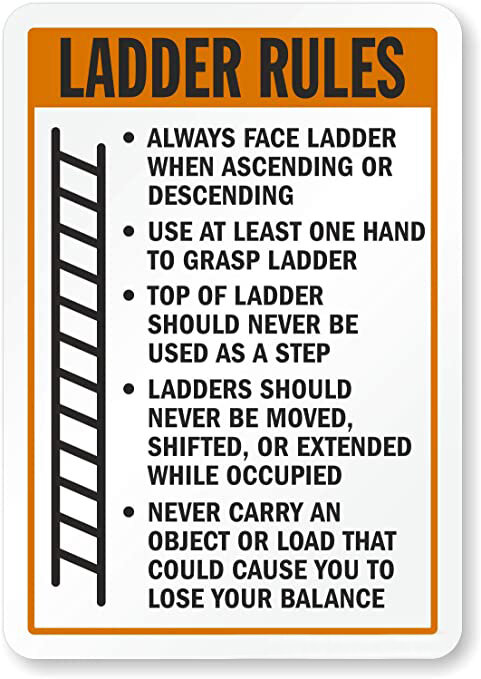
Toolbox Talk: Ladder Safety
A major cause of falls from ladders is improper set-up. Many accidents can be avoided with common sense and good work practices. Using proper set-up techniques will give your ladder maximum stability and help ensure your safety. There are many more aspects of using a ladder than you might think. You want to make sure you do the following:
• select the right ladder for the job
• check the condition of the ladder
• set up the ladder correctly, and
• work safely on a ladder
NOTE: When working on a ladder you should always maintain three points of contact. This means either you have two hands and one foot on the ladder or two feet and one hand on the ladder at all times.
4 Points to Remember:
1. Pick the right ladder. The ladder should be the correct type and length. An ordinary straight ladder is probably the most commonly used ladder, however, an extension ladder may be required for high work, and a step ladder should be used when you need a free-standing ladder or one with a tool tray. A metal ladder should never be used around any electrical installation.
2. Check the conditions of the ladder: Make sure all parts of the ladder are in good working order, and free of rust, corrosion, rot, cracks, and other defects. Check rungs, side rails, braces, hinges, ropes and pulleys. Never use a painted ladder because paint can hide defects.
3. Setting up the ladder: For straight ladders, angle the ladder so the base is 1’ away from the wall for every 4’ of height. A step ladder should be locked into a fully open position. Raising an extension ladder is a 2 person job, and there should be considerable overlap between each section.
4. Working safely on ladders: Never carry tools or material in your hand. Never stand on the top rung; never move a ladder while you’re on it. Move slowly & carefully, and never work on a ladder in bad weather such as rain and lightning.


